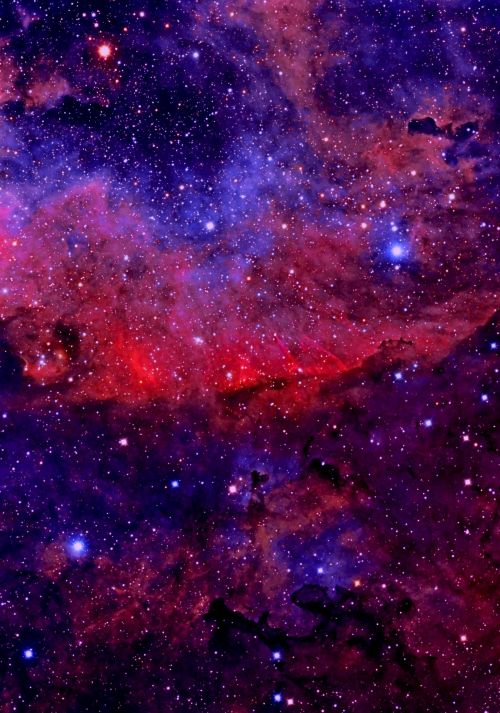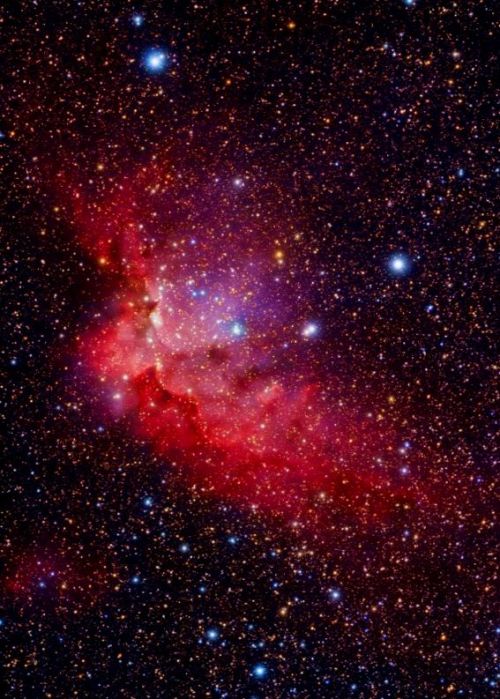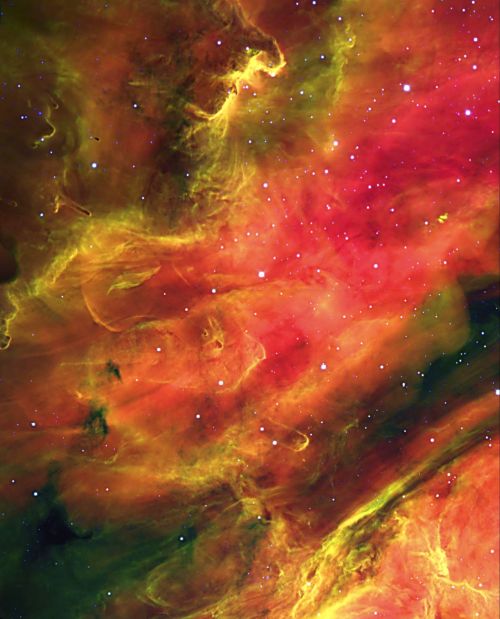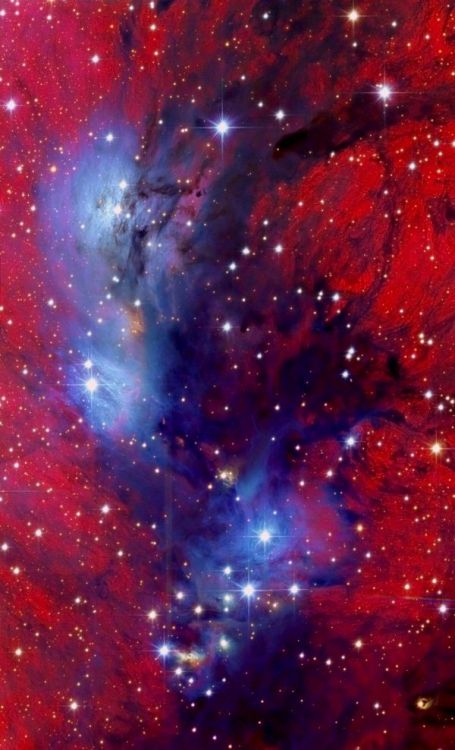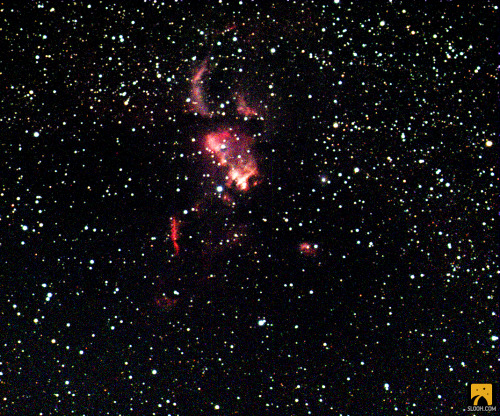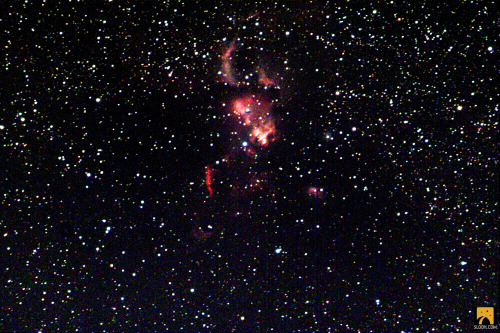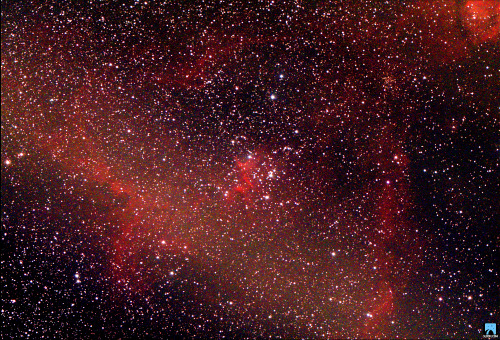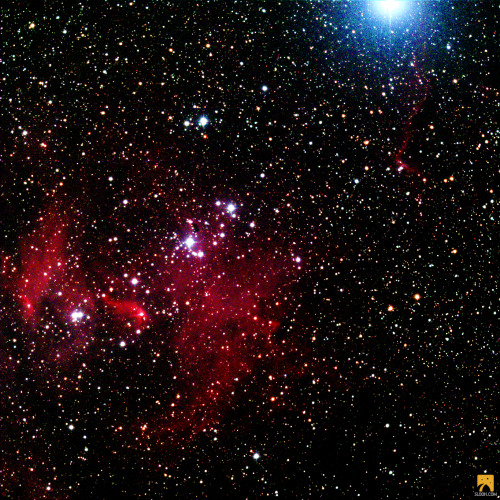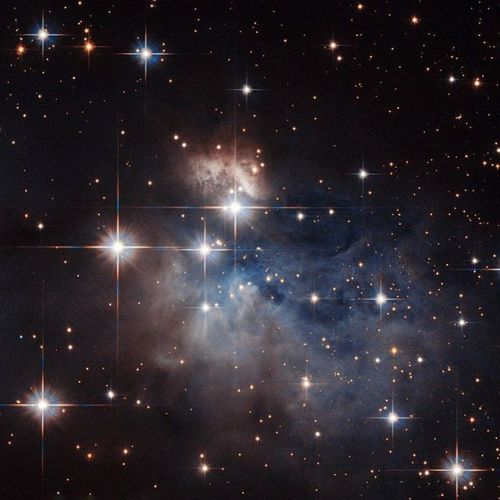#emission nebula

An enhanced Scorpius constellation!! If it looked this good to the unaided eye, we might might remember it better, typically appears as a few bright stars in a constellation. To get a spectacular image like this, though, you’d need a good camera, a dark sky, and some sophisticated image processing. The resulting digitally-enhanced image shows many breathtaking features. Diagonal across the right side of the image is part of the Milky Way Galaxy. Visible there are vast clouds of bright stars and long filaments of dust. Rising vertically on the left are dark dust bands known as the Dark River. Several of the bright stars on the left are part of Scorpius’ head and claws, and include the bright star Antares. Numerous red emission nebulas, blue reflection nebulas, and dark filaments are visible as well. Scorpius appears prominently in southern skies after sunset during the middle of the year.
Image Credit & Copyright: Stefan Lenz
Barnard 344, pictured toward the bottom of the image, is a dark nebula located near the star Sadr in the Gamma Cygni Nebula. Emission nebula LBN234 can be seen in the upper, middle section of the photo. Also reflection nebula VanDenBergh 130 can be spotted in this photo.
Post link
Lagoon Nebula in the constellation Sagittarius (combined view of infrared and visible light)
Post link
This is NGC 3576!
Located 9000 light years away in the Eta Carinae Nebula, this nebula’s distinct shape has earned in the nickname “The Statue of Liberty Nebula”. Drifting through the Milky Way’s Sagittarius Arm, rampant star formation and ensuing stellar winds shape this beautiful collection of gas and dust!
Taken by me (Michelle Park) using the Slooh Canary Two telescope on December 8th, 2021 at 5:07 UTC.
Post link
This is the Flame Nebula!
The vibrant clumps of gas in this nebula are assumed to be proplyds, which are disks of gas around young stars that may form planets. This appears to be common all throughout the Orion Molecular Cloud Complex, which not only includes the Flame Nebula but also other famous nebulae like the Horsehead Nebula and the Orion Nebula! ✨✨✨
Taken by me (Michelle Park) using the Slooh Chile Two telescope on November 23rd, 2021 at 1:58 UTC.
Post link
This is the North America Nebula!
Although the thick dust of this nebula makes it opaquely red, the use of infrared telescopes reveal a beautiful stellar landscape underneath. Stretching across 50 light years, this nebula contains thousands of young, hot stars that heat up the surrounding gas and make it emit its amazing colors!
Taken by me (Michelle Park) using the Slooh Canary One telescope on May 26th, 2022 at 4:33 UTC.
Post link
This is the Statue of Liberty Nebula!
Located in the Carina arm of the Milky Way and at a distance of 9000 light years away, this towering nebula has 2 huge filaments filled with newborn stars. If you look carefully, you can see looping fragments shaped by the stellar winds of hot stars!
Taken by me (Michelle Park) using the Slooh Canary Two telescope on March 8th, 2022 at 2:07 UTC.
Post link
This is the Heart Nebula!
Happy Valentine’s Day! To celebrate this occasion, here is the beautiful Heart Nebula, an emission nebula with dark dust lanes and glowing red hydrogen gas. The heart shape of the nebula is driven by stellar winds from the hot stars inside, some of which have masses up to 50 times the Sun!
Taken by me (Michelle Park) using the Slooh Canary Two telescope on February 7th, 2022 at 21:13 UTC.
Post link
This is the Running Chicken Nebula!
This nebula’s unique name comes from the shape of its brightest region being similar to a running chicken. In the upper right corner, you can see the bright star Lambda Centauri, which gives this nebula a second name: the Lambda Centauri Nebula!
Taken by me (Michelle Park) using the Slooh Canary Two telescope on February 5th, 2022 at 3:22 UTC.
Post link
This is the Trifid Nebula!
This nebula’s unique name comes from the 3 dark bands of dust that traverse its center. Despite the nebula itself holding many massive stars, it is no longer undergoing star formation because these highly radiative stars have blown a lot of the dust away!
Taken by me (Michelle Park) using the Slooh Canary Two telescope on February 5th, 2022 at 8:37 UTC.
Post link
This is the Eta Carinae Nebula! ✨✨✨
Due to its eruption in the 1840s, the mass of this stunning nebula has been challenging to measure. The colorful dust also dims the star’s ultraviolet and visible light by reradiating the shorter, more energetic light through longer wavelengths like infrared light! ❤❤❤
Taken by me (Michelle Park) using the Slooh Canary Two telescope on February 1st, 2022 at 5:32 UTC.
Post link

NGC 3572 and the Southern Tadpoles
This cosmic skyscape features glowing gas and dark dust clouds along side the young stars of NGC 3572. A beautiful emission nebula and star cluster in far southern skies, the region is often overlooked by astroimagers in favor of its brighter neighbor, the nearby Carina Nebula. Stars from NGC 3572 are toward the upper left in the telescopic frame that would measure about 100 light-years across at the cluster’s estimated distant of 9,000 light-years. The visible interstellar gas and dust is part of the star cluster’s natal molecular cloud. Dense streamers of material within the nebula, eroded by stellar winds and radiation, clearly trail away from the energetic young stars. They are likely sites of ongoing star formation with shapes reminiscent of the cosmic Tadpoles of IC 410 better known to northern skygazers. In the coming tens to hundreds of millions of years, gas and stars in the cluster will be dispersed though, by gravitational tides and by violent supernova explosions that end the short lives of the massive cluster stars.
Image & Text Copyright: Josep Drudis, NASA
Time And Space
Hubble Space Telescope image showing an emission-line star located just under 2,300 light-years from Earth. The presence of a reflection nebulae indicates the star is still young.
Source: NASA Instagram
Credit: ESA/Hubble & NASA, Acknowledgement: Judy Schmidt.
Post link

